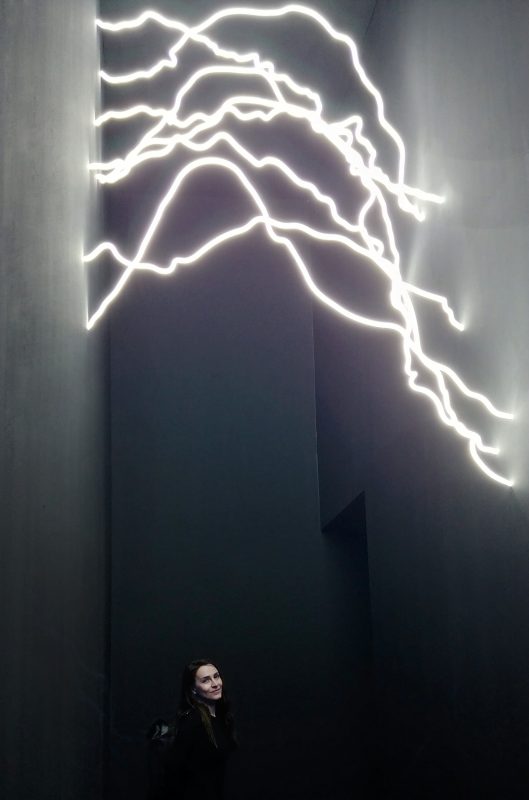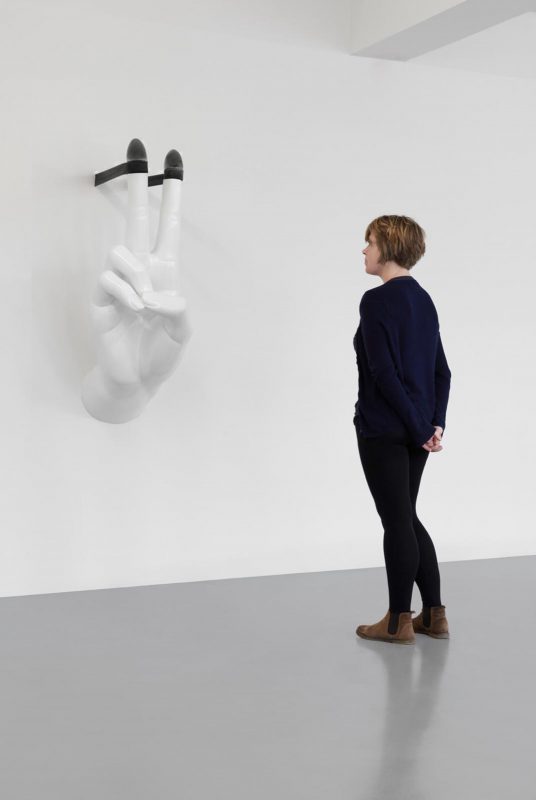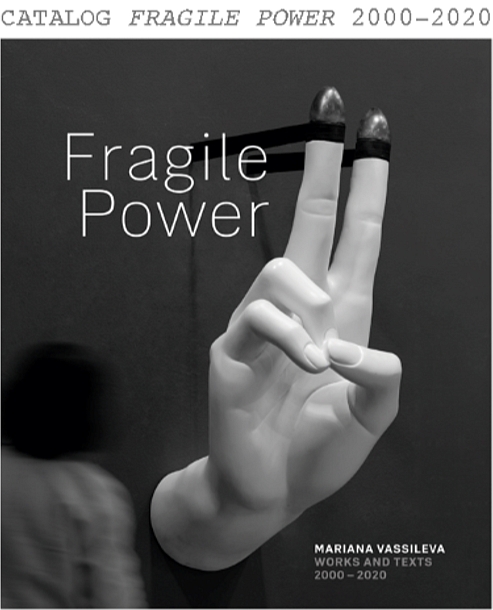

About the Artist
Thinking Surrenders to Feeling
On the work of Mariana Vassileva
by Michael Stoeber
No one in philosophy so eloquently invoked the duality of human nature of feeling and thinking like Blaise Pascal. The often dramatic tension between reason and feeling produces, in his understanding, ”a civil war within oneself.” To escape this conflict, humans usually
choose either one side or the other without this leading to a solution. It is necessary however to pacify and balance reason and feeling. What Pascal writes in his ”Pensées” on the ambivalent human nature, Mariana Vassileva shows through powerful images in her art.
Pascal’s philosophy is not only apparent when one looks at the artist’s works, but also when one has the privilege of getting to know the artist herself. Vassileva, born in Bulgaria, lives and works in Berlin. She is an equally intelligent and sensitive woman, who draws her multimedia works from both mind and emotion. To her, precise analysis and compassionate empathy are not opposites. On the contrary, they formally condition one another in the artist’s view of the
human being.
This is evident from the title of the catalogue in which she collects her objects, sculptures, drawings, installations, photographs and videos: ”Fragile Power”. Being fragile and vulnerable are not necessarily the connotations we commonly associate with power. If however, one
thinks of human beings as power-holders, and this concerns Vassileva’s entire interest, then we become aware of the instability of all man-made conditions. The ancient Greeks saw danger in glory, in a bright moment already the grey transience and their tragedies warned the spectators against any hubris.
In the following an attempt is made to look more closely at some of Mariana Vassileva’s works against this background. Their selection is entirely according to the author’s preference, and their discussion follows a more medial and thematic than a chronological order. What is striking about the artist’s work at first glance is the returning of light as both a subject and medium. A major theme! From Genesis to Enlightenment, not to mention the nineteenth-century electrification, light is associated with a treasury of cultural metaphors. Vassileva
takes this to another level in her works. In doing so, she finds shapes that let us see light in completely new contexts.
Particularly impressive is the archaic ritual performed by a young man in the video ”Turnono” (2013). Like Prometheus once, who stole the fire from the gods, he illuminates the darkness of the night by sweeping a mighty ball of fire. He turns in a raging whirl around his own axis. Light and dark, fire and night become twin accomplices who, like good and evil, are tensely related to each other. The same happens in the installation ”Break In / Out: Breathing Light” (2013). A lonely lightbulb is locked up in a dark prison of wire mesh, from which its rays of light escape. The light becomes the index of the thinking human and the rays of light symbolically become his thoughts. They are, as Friedrich Schiller has emphatically written, ”free” and cannot be imprisoned.
Vassileva’s other works with light concretely address a specific situation. For example, her touching installation, which shows an armada of shoes that seek their way across the broad, white surface of a wall, reminds us of the human migration flows of our time. By furnishing each of these shoes with a light that evokes the aura of Christian iconography, the artist gives back dignity to the people becoming visible through this installation. A dignity often denied by the reality of political practice. Moving poetry is also found in the choreography of her video ”Reflections” (2006), in which people in a park reflect the light of the sun through small mirrors in the direction of the camera, in this way providing an Arcadian group image illuminated by starry flashes.
Especially in that last, but also in the works mentioned earlier, the production strategy is quite simple. Yet a simplicity that’s difficult to enact. Because Vassileva always uses it to develop a complex semantic echo chamber of thinking and feeling.
Like in the wonderful ”Highway Dream” (2014), the black and white photograph of a car tire rolling down alone a dusty country road. Here the artist succeeds in creating a melancholic road movie with just one image. It tells of pride and dignity, freedom and independence,
but also of loneliness and vulnerability. Full of militant vigour is also the protagonist of the video ”Toro” (2008), who uses his jacket as a capa to fight like a bullfighter against the overpowering sea.
This marks an experience of powerlessness and finiteness as well as a slapstick attitude. They collaborate as if the perspective of Caspar David Friedrich’s ”Monk by the Sea” had formed an alliance with the defiant punk motto, ”You have no opportunity, but use it”. The
compatibility of the incompatible is captured in many of Vassileva’s works. Her microphone ending in a grenade knows that words can not only love and pacify, but can also be weapons that cause harm and in the worst case kill. Humans are of the same ambivalence as their
language. The beautiful Joey (2007) is no less male than female. The hand in ”Just a Game” (2009) transforms into both a weapon and a blessing gesture. And the charted head, ”Phrenology Head” (2014), with the red clown’s nose testifies how smart and stupid we can be at the same time.
In fact, all of Vassileva’s works are about us. The dictum of Aristotle in his ”Poetics” that art should be concerned with the human cause, what the ancient Romans called the ”mea reas agitur”, is masterfully observed by the artist. In her work we often see artistic, seemingly
gravity-relieved tricks like the tower of school chairs in “Denkpause” (2016). Even its title opens up a perspective through which Shakespeare’s ”Hamlet” also tries make his friend aware of the reality of ”miracles and consecrations” (Gottfried Benn) beyond rational
argument: ”There are more things in heaven and on earth than your book learning could ever imagine, Horatio.”
A similar artistry is also featured in Vassileva’s wonderful work “Flying and Other Daily Necessities” (2016), in which a human becomes an aviator. A rope that stretches out to the skies like a snake summoned by an Indian dressage master, takes him into the air. It is as if
they are bound by a powerful, ever faster unwinding umbilical cord. It also emphasises that our longing to fly is in our DNA. Accompanied here by the illuminating paradox, that in order to find oneself and become a unique individual, and thus to fly through our lives, we have
to cast off this umbilical cord. The fact that the desire to fly, to rise above gravity and the monotony of our existence is recognised by the artist as a ”daily necessity” has a fairytale-like as well as a moral dimension. Once again it is depicted what Oscar Wilde captivated in the beautiful aphorism: ”Only the realist knows how to dream.”
Immanuel Kant has written about humans that they are made of such “wry wood” that it “cannot be straightened”. This sentence occurred to me when looking at Mariana Vassileva’s installation, consisting of an old, crooked, rusty and a new, straight, golden nail. It is accompanied by the question ”Will They Be Friends One Day?” (2011).

1994-2000 studied at the Universität der Künste in Berlin,
lives and work in Berlin
Short Vita
Musée d’art contemporain de Montréal (Canada), Tate Britain (UK),
Centre Pompidou / Paris, Museo Nacional Centro de Arte Reina Sofía (Spain).
Museum of Fine Arts, Boston, MA, The Israel Museum, Jerusalem,
Kunstmuseum Wolfsburg, Wolfsburg, Weserburg Museum für moderne Kunst, Kunsthalle zu Kiel, Edition Block, Berlin, The Stenersen Museum, Oslo, Total Museum, Seoul, Hong Kong Arts Centre, Hong Kong.
She has participated in several Biennials, such as the 17th Biennale of Sydney
– The Beauty and the Distance – Biennale of Sydney, Sydney, NSW, Art
– Rewriting Worlds – 4th Moscow Biennale of Contemporary art, Moscow,
Biennale Vento Sul in Curitiba, Brasil, 1° Bienal del Fin del Mundo
– Ushuaia 2007 – Bienal al Fin del Mundo, Ushuaia.
Some of her works are part of the Collections of:
Kunstmuseum Wolfsburg, Wolfsburg, Rene Block Collection, Berlin,
Koc Museum, Istanbul, The Israel Museum / Israel, La Caixa /
Caja de Ahorros de El Monte y Fundacion el Monte / Spain, Lemaitre,
London-Paris, Kunsthalle in Emden / Germany, Lidice Memorial,
several privat collections.
Residencies
Mexiko, Sydney, Istanbul, Petersburg, Sao Paolo, Auckland – NZ, Hong Kong
Get in Touch
© 2024 Mariana Vassileva. All rights reserved.